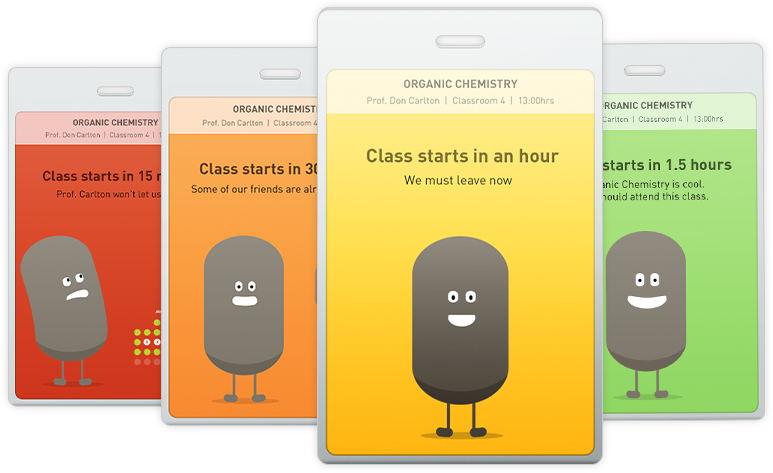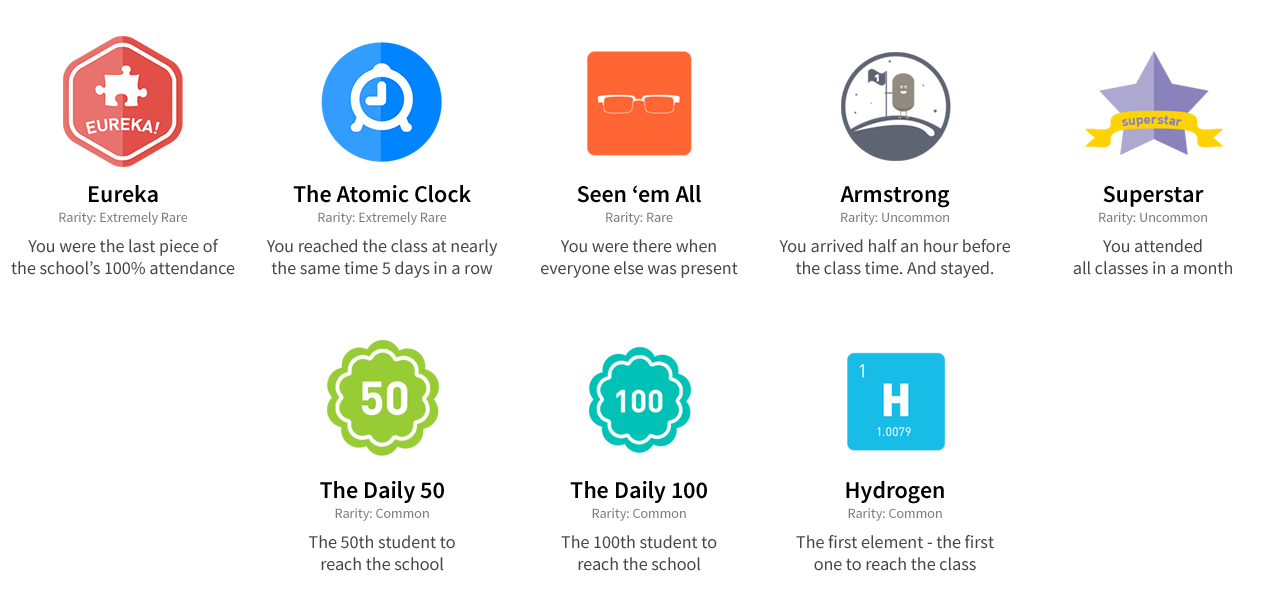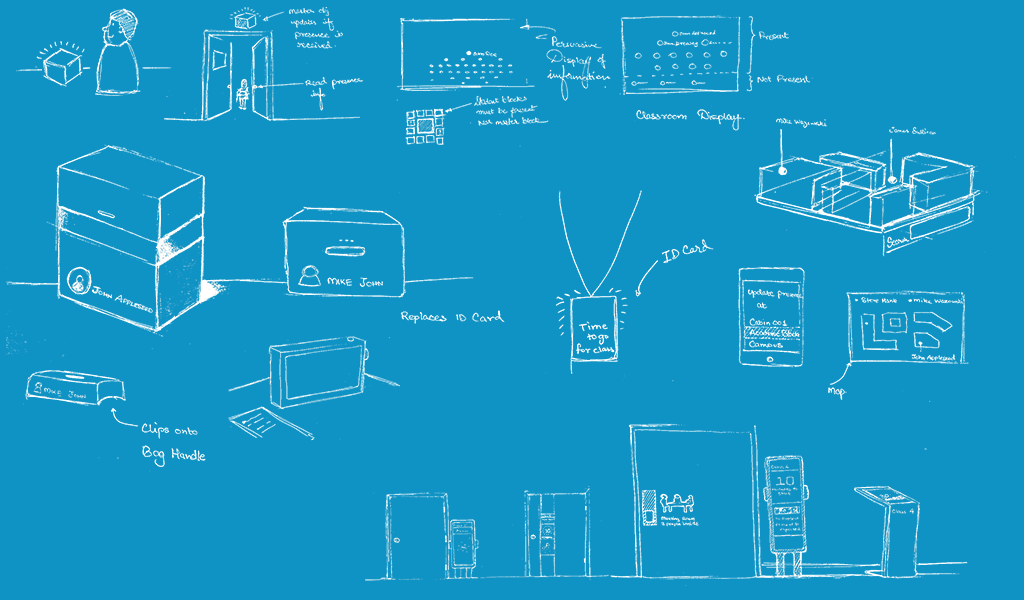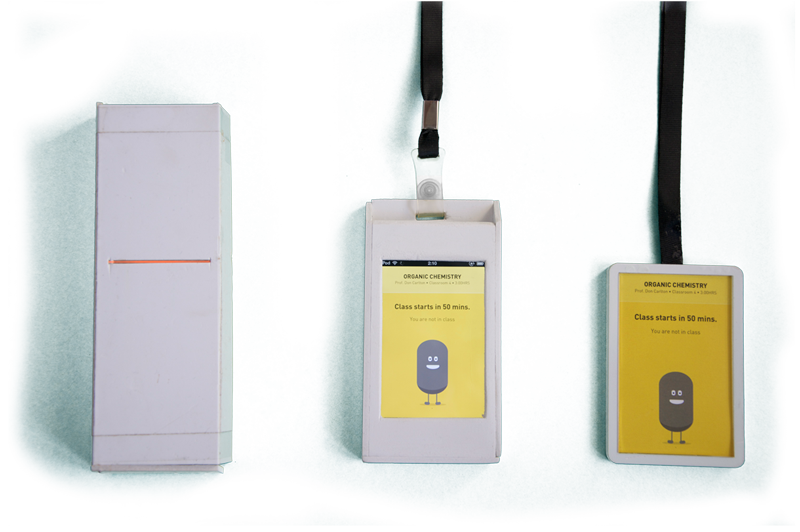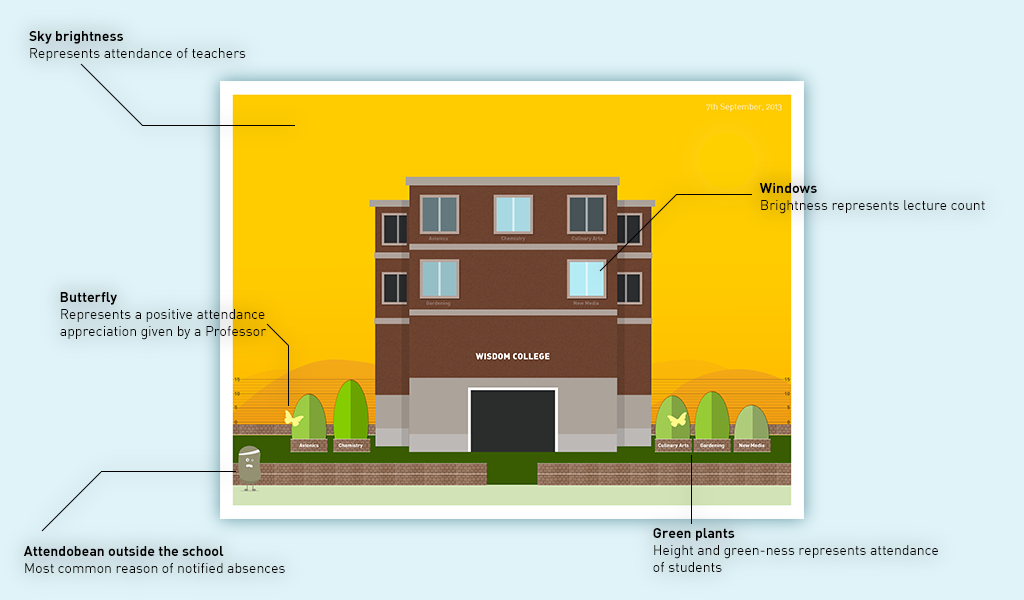I started with making a device that students would have to carry with them. A prototype for such a device was quickly made using foamcore, an Arduino, an RGB LED and a buzzer. To mark the attendance, it used an RFID card attached to it. It showed time remaining for a lecture by changing colors going from cool blue to warm red. Upon entering the classroom, an RFID reader in the classroom would read the presence of the RFID card and mark their attendance. Sketches were made for variants of this device changing the form. Two main variants were one which was shaped and sized like a marker, and the other being one that was shaped like a clip-on for school-bags.
After seeing the prototype in action, it was observed that just colour-based indications and buzzer beeps were not sufficient. It also did not provide an easy way to update timings for the next lecture. I also observed and learnt through informal interviews that friends play an important role in deciding whether a class should be attended or not. I also read literature on Persuasive Design. I therefore decided to add information about a user's friends. It was deemed be an effective motivation. At this stage I also understood that the device needed to have a degree of fun and not be a bureaucratic and stern alarm clock that asks you to go and attend classes. Reading about Gamification thus happened. This was when the idea for Attendobean was conceived.
The challenge of finding who a user's friends could be solved sufficiently by employing trend analysis. The system could automatically observe which group of students generally attend and miss classes together. It wouldn't be hundred percent correct to call these users 'friends', but they would potentially demonstrated some kind of grouping. In an academic institution, this could be grouping based on locality of residence, mode of transport, academic performance, economic status, students' native language, or affinity.
The next class of prototypes were made using an iPod Touch running a custom HTML5 application powered by JavaScript. For the scope of a workable demonstration, the database of students, classes and professors was made using XML. A collection of XML files were referenced and updated to show class timings, presence/absence status, etc. The RFID reader was connected to the server through an application written in C++ that read data from the USB port and wrote to the same XML files. The touch screen, and iOS Safari allowed for some very interesting interactions. The final demonstration ran as a full screen web app. CSS3 allowed for some very engaging and meaningful interactions. Layers of information were translated to layers in the application that were revealed by slide, pinch and tap gestures. hammer.js was used to detect multitouch gestures.

